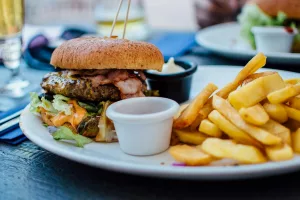For true coffee enthusiasts, brewing the perfect cup of coffee is both an art and a science. There are numerous ways to brew coffee, each with its unique method, flavor profile, and experience. Whether you’re looking for a strong, bold brew or a delicate, nuanced cup, understanding the various coffee brewing techniques will help you explore the depth and richness of coffee flavors.
In this article, we’ll explore 12 of the best coffee brewing techniques, detailing the process, equipment, and the distinct characteristics of each method. From classic methods to more modern innovations, you’re sure to find a brewing technique that suits your taste and style.
1. Espresso Machine
What It Is:
An espresso machine brews coffee by forcing hot water through finely-ground coffee beans under high pressure, creating a concentrated and flavorful shot of coffee known as espresso.
How to Brew:
- Grind your coffee beans finely (espresso grind).
- Tamp the ground coffee tightly into the portafilter.
- Insert the portafilter into the machine and start brewing. The hot water is forced through the coffee grounds under high pressure (9 bars or more).
- A shot of espresso, typically around 1 ounce, is extracted in 20-30 seconds.
Why It’s Popular:
Espresso is known for its bold flavor, rich crema, and versatility as a base for many coffee drinks like lattes, cappuccinos, and macchiatos. Espresso machines are ideal for coffee lovers who enjoy strong, concentrated coffee.
2. Pour-Over (Chemex or Hario V60)
What It Is:
Pour-over brewing involves manually pouring hot water over coffee grounds in a filter, allowing the water to slowly extract the flavors as it passes through the grounds and into a carafe or mug.
How to Brew:
- Place a paper filter in the pour-over dripper (Chemex or Hario V60) and wet the filter to remove any papery taste.
- Add medium-ground coffee to the filter.
- Slowly pour hot water (around 200°F) in a circular motion, saturating all the coffee grounds evenly.
- Continue to pour in stages, allowing the water to pass through the coffee and filter.
Why It’s Popular:
Pour-over brewing allows for complete control over the brewing process, resulting in a clean, bright flavor with clarity and balance. The method highlights subtle nuances in the coffee beans, making it a favorite for enthusiasts who appreciate precision.
3. French Press (Press Pot)
What It Is:
The French press (or press pot) is a full-immersion brewing method that steeps coarsely-ground coffee in hot water before separating the grounds by pressing down a metal or plastic mesh filter.
How to Brew:
- Add coarsely-ground coffee to the French press.
- Pour hot water (just off the boil) over the coffee grounds.
- Stir gently and allow the coffee to steep for 4-5 minutes.
- Slowly press down the plunger to separate the grounds from the brewed coffee.
Why It’s Popular:
The French press produces a rich, full-bodied coffee with robust flavors because the coffee grounds are in direct contact with the water throughout the brewing process. It’s a great method for those who love strong, bold coffee.
4. AeroPress
What It Is:
The AeroPress is a versatile and portable brewing device that uses air pressure to push water through coffee grounds, resulting in a quick and smooth coffee extraction. It can brew both espresso-like coffee and regular coffee.
How to Brew:
- Add finely-ground coffee to the AeroPress chamber.
- Pour hot water over the coffee grounds and stir.
- Place the plunger on top and gently press down to extract the coffee.
Why It’s Popular:
The AeroPress is highly regarded for its portability, versatility, and ability to brew a clean, smooth cup of coffee in a short time. It’s popular among coffee enthusiasts for its easy cleanup and ability to experiment with different brew strengths.
5. Cold Brew
What It Is:
Cold brew coffee is made by steeping coarsely-ground coffee in cold water for an extended period, typically 12-24 hours. This slow extraction process produces a smooth, low-acid coffee that’s served cold.
How to Brew:
- Combine coarsely-ground coffee with cold water in a large container or cold brew maker.
- Let the mixture steep in the refrigerator for 12-24 hours.
- Strain the coffee grounds using a fine mesh filter or cheesecloth.
- Serve over ice or dilute with water or milk.
Why It’s Popular:
Cold brew coffee is prized for its smooth, mellow flavor with low acidity, making it easy on the stomach. It’s perfect for warm weather and can be stored in the fridge for up to a week, making it a convenient option for iced coffee lovers.
6. Moka Pot (Stovetop Espresso Maker)
What It Is:
The Moka pot is a stovetop coffee maker that brews coffee by using steam pressure to force hot water through coffee grounds. The result is a strong, espresso-like coffee.
How to Brew:
- Fill the bottom chamber of the Moka pot with water.
- Add finely-ground coffee to the filter basket without tamping it down.
- Assemble the pot and place it on the stove over medium heat.
- As the water heats, steam pressure will push the water through the coffee grounds, collecting in the top chamber.
Why It’s Popular:
Moka pots are known for brewing strong, intense coffee that is similar to espresso but without the need for an expensive machine. It’s a favorite among coffee lovers who want a rich, concentrated brew with minimal equipment.
7. Siphon (Vacuum Pot)
What It Is:
A siphon (or vacuum pot) is a unique brewing method that uses vapor pressure and a vacuum effect to brew coffee. It involves two chambers, with the lower one holding water and the upper one holding coffee grounds.
How to Brew:
- Add water to the lower chamber and coffee grounds to the upper chamber.
- Heat the water in the lower chamber until vapor pressure forces it up into the upper chamber to mix with the coffee grounds.
- Once the heat is removed, the brewed coffee is drawn back down into the lower chamber by a vacuum effect.
Why It’s Popular:
Siphon brewing creates a visually impressive process and produces a clean, aromatic cup of coffee with complex flavors. It’s popular among coffee enthusiasts who enjoy the theatrical aspect of coffee brewing and appreciate the control it offers over the brew process.
8. Percolator
What It Is:
A percolator is a traditional coffee brewing method that uses boiling water to continuously cycle through coffee grounds, extracting the coffee until the desired strength is achieved.
How to Brew:
- Add water to the percolator’s bottom chamber and ground coffee to the filter basket above.
- Heat the percolator on the stove or plug it in (if electric).
- As the water boils, it is forced up through a tube and over the coffee grounds, repeatedly passing through until the coffee is brewed.
Why It’s Popular:
Percolators are known for making strong, robust coffee and are often used when brewing large quantities of coffee. It’s a nostalgic method for many and is particularly favored by campers due to its simplicity and ability to be used on an open flame.
9. Drip Coffee Maker (Automatic Coffee Machine)
What It Is:
A drip coffee maker is one of the most common household coffee brewing methods. It automatically brews coffee by heating water and dripping it over coffee grounds contained in a paper or mesh filter.
How to Brew:
- Add water to the reservoir and ground coffee to the filter basket.
- Start the machine, and hot water will drip over the coffee grounds, passing through the filter and into a carafe.
Why It’s Popular:
Drip coffee makers are convenient and easy to use, making them perfect for brewing multiple cups of coffee quickly. They produce a mild, smooth coffee and are ideal for households that drink coffee daily.
10. Turkish Coffee
What It Is:
Turkish coffee is a traditional method of brewing unfiltered coffee by boiling finely-ground coffee with water and sugar (optional) in a small pot called a cezve.
How to Brew:
- Combine finely-ground coffee, water, and sugar (if desired) in a cezve.
- Heat the mixture over low heat until it begins to foam, but do not let it boil.
- Pour the coffee into a cup, allowing the grounds to settle before drinking.
Why It’s Popular:
Turkish coffee has a rich, thick texture and a strong, intense flavor. It’s often enjoyed slowly, with the grounds settling at the bottom of the cup, and is part of a social coffee-drinking tradition in many Middle Eastern and Balkan countries.
11. Kalita Wave
What It Is:
The Kalita Wave is a pour-over method similar to the Hario V60, but it uses a flat-bottomed dripper with three small holes, which results in a more consistent and even extraction.
How to Brew:
- Place a Kalita Wave filter in the dripper and rinse it with hot water.
- Add medium-ground coffee to the filter.
- Pour hot water over the coffee grounds in a circular motion, allowing the water to pass through evenly.
Why It’s
Popular:
The Kalita Wave is praised for its even extraction and ability to produce a balanced, well-rounded cup of coffee. Its unique design makes it more forgiving and easier to use for beginners compared to other pour-over methods.
12. Nitro Cold Brew
What It Is:
Nitro cold brew is cold brew coffee infused with nitrogen gas, giving it a creamy, velvety texture similar to a stout beer. The nitrogen creates tiny bubbles that give the coffee a rich mouthfeel without added milk or cream.
How to Brew:
- Brew cold brew coffee by steeping coarse coffee grounds in cold water for 12-24 hours.
- Infuse the cold brew with nitrogen using a special nitro tap or whipped cream dispenser.
- Serve the nitro cold brew on tap, allowing the nitrogen to create a frothy, creamy texture.
Why It’s Popular:
Nitro cold brew offers a smooth, creamy texture with a slight natural sweetness, making it a popular choice for cold coffee enthusiasts who want a rich, indulgent coffee experience without added sugar or cream.
Final Words
Whether you prefer a strong espresso shot, a delicate pour-over, or a smooth cold brew, these 12 coffee brewing techniques offer something for every coffee enthusiast. Each method brings out different flavors and textures, allowing you to explore the nuances of coffee beans and tailor your brewing style to your personal taste.
By experimenting with these brewing methods, you can expand your coffee repertoire, discover new flavors, and deepen your appreciation for the craft of coffee making. So grab your favorite beans, try a new technique, and enjoy the endless possibilities that coffee brewing has to offer!




